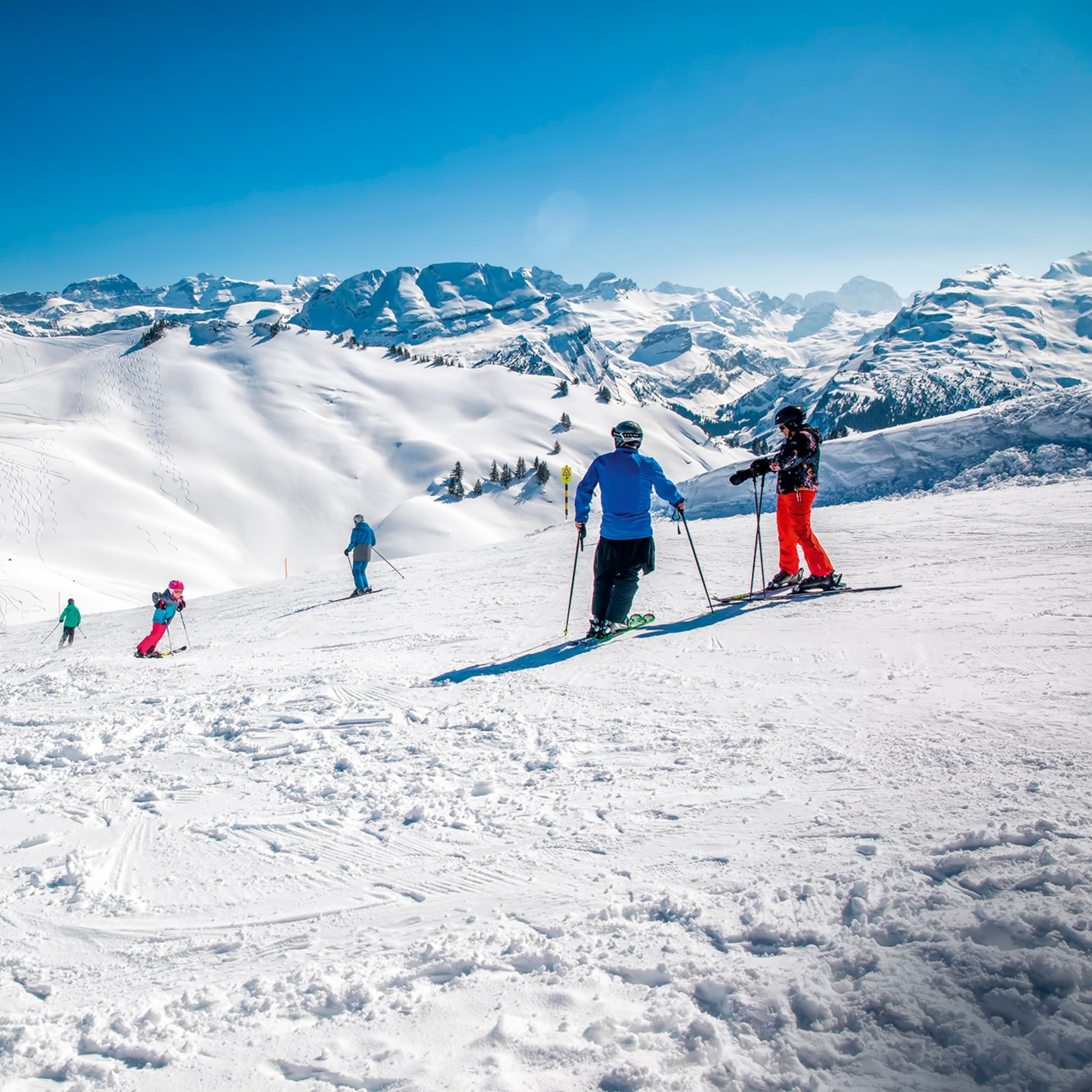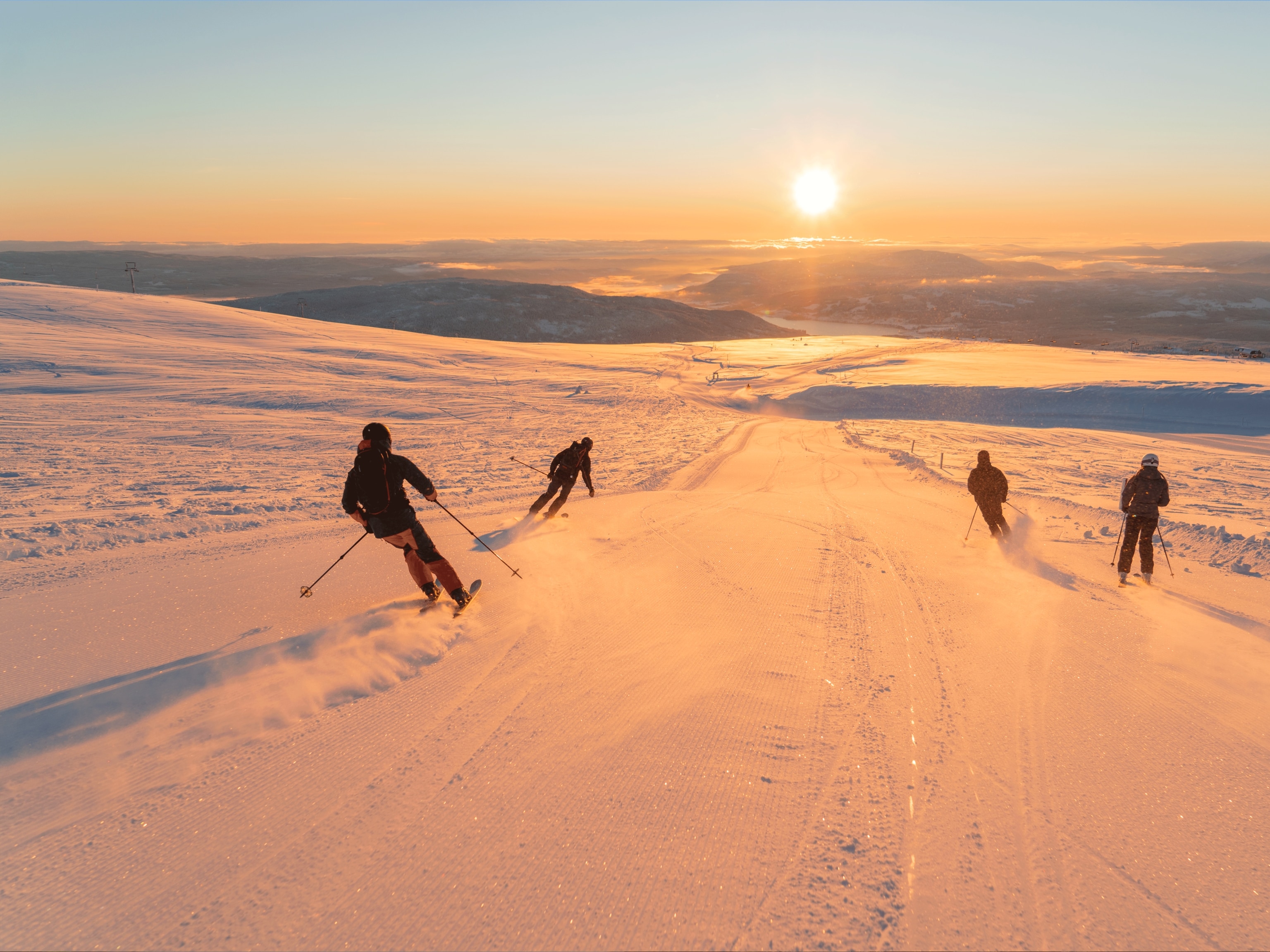
What's the future for low-altitude ski resorts as global temperatures rise?
As the climate warms, we look at the impact on low-altitude ski resorts, many of which are reinventing themselves in the face of an uncertain future.
When it comes to skiing, altitude matters. And never has this been truer. Our planet’s warming climate is driving skiers higher up the mountain to find reliable snow conditions. Green fields in February, slush underfoot in March and dazzling sunshine and double figures come Easter — the white winter wonderland of the Alps is in becoming something of a fantasy below the magic 6,500ft mark. Small resorts located lower than 4,920ft have been particularly hard hit, with unpredictable snow and shrinking winter seasons that have bludgeoned local economies and, in the worst cases, forced them into debt and closure.
How much is the snow line rising?
The Alpine climate has changed radically over the past century, with temperatures rising by 2C: twice the global average. While this number seems insignificant on paper, the reality means melting glaciers and snow that’s increasingly thin on the ground.
As climate change takes its toll, snowfall is erratic below 6,500ft. According to a recent study by Hydrology and Earth System Sciences, the number of snowy days in the Alps will halve by 2100 if greenhouse emissions remain at current levels — in real terms, this means that elevations of 8,200ft and above will lose three months of snow. The study eagerly points out, however, that emissions cuts in line with the Paris Agreement would save more than 80% of the snow. Southern Alpine regions are bearing the brunt: at the end of the last winter season, Piedmont in Italy had received just a third of the snow it used to get.

Meagre snowfall has dealt a hammer blow to small resorts, which struggle to compete with the slopes and facilities of bigger players like Chamonix, Zermatt and Kitzbühel. France is seeing a steady decline in small, low-altitude resorts, with each year bringing fresh closures in the wake of warm winters: Le Mont-Dore in Auvergne-Rhône-Alpes, Céüze in the Hautes-Alpes and, most recently, Schnepfenried in Alsace. Some have been abandoned due to dwindling visitor numbers; others are operating a skeletal service. These dying resorts have a peculiar bleakness: their slopes scarred and chairlifts left to rust. Local communities and economies have been obliterated. According to a University of Grenoble study, almost half of the 169 ski resorts that have closed since 1951 went bust due to lack of snow.
Is artificial snow the solution?
Yes — and no. While many resorts have snow on the higher slopes, it’s often a thing of the past now in low-lying valleys and villages. Relying on snow cannons has its downsides — they’re expensive energy guzzlers. Then there’s the considerable environmental cost. Given Europe’s current energy crisis, you might well wonder if it’s ethical to ski in low-altitude resorts that rely heavily on fake snow, which requires vast amounts of electricity and water.
“We know we can’t save winter by just using snow cannons forever, so we’re focusing on being a family resort, with activities that aren’t season dependent,” admits Gabriele Heer, a spokesperson for Braunwald in Switzerland’s Glarus Alps. But as many resorts wise up to the threat of a warming planet, they’re upping their sustainable credentials, from Söll (2,306ft) in Austria’s Tyrol, with its biomass-fuelled lift stations and fleet of energy-efficient piste bashers, to Whistler (base elevation of 2,198ft), whose eco snow cannons operate on hydroelectric power.
What’s the environmental impact of scant snow?
While eco snow might keep skiers on the slopes in the short term at lower altitudes, reduced snowfall is having a devastating long-term impact on the environment, with increased erosion and rock fall, loss of habitat for wildlife and droughts and floods that swing with the wild whims of the weather.

Is there life still at low altitude?
Absolutely, if you choose wisely. Look for environmentally responsible resorts offering widely varied activities (including non-snow related ones). And remember, height isn’t always a direct indication of snowfall.
“Altitude is always relative,” says Janine Graf, PR Manager of SkiWelt, one of Austria’s largest interconnected ski areas in the shadow of the Wilder Kaiser. “Our ski area is located on Alpine meadows, tended by farmers through the summer as they traditionally always have been. Therefore, we don’t need nearly as much snow as high-altitude ski areas set on rocky terrain.”
Those who struggle with maintaining snow cover are becoming masters of reinvention and diversifying activities is proving their saving grace. Many are ditching the ski-only model, rebranding as year-round mountain resorts, with spas and low-impact activities from hiking and biking to sledding, snowshoeing and ice climbing. Hotels and chalets are following suit.
“We’re moving towards a four-season tourism model,” says Al Judge, co-founder and co–owner of AliKats, 12 ultra-sustainable luxury chalets in Morzine in the French Alps that use 100% renewable energy. “Our aim is to diversify our income streams so that we’re less dependent on snow and create offerings that allow people to enjoy the mountains year-round.”
The path to sustainability
The message is clear: if low-altitude resorts are to navigate this slippery slope, they need to be greener. The downhill thrill is all well and good, but nature is the bottom line.
“Sustainability has always played a key role at SkiWelt,” says Janine Graf. “For more than 20 years, the entire ski region has run on 100% green electricity provided by Tyrolean hydropower. In 2008, we built the world’s first solar lift. We also use the return heat from our mountain railways to heat the restaurants. Nothing but pure drinking water has been used for snowmaking since the outset. And as the snow melts at the end of the winter season, the water returns to the flora and fauna.”
Top tips for finding the snow
1. Ski mid-season: for the best chances of snow, visit during the coldest months (January and February).
2. Choose varied activities: resorts with lots of low-impact activities will offer a new appreciation for the mountains, with plenty to keep you amused on no-snow days.
3. Ski elsewhere: altitude isn’t everything — latitude also plays a role. Cast your net wider. Many low-lying resorts in Arctic Sweden, Finland and Norway, for instance, have excellent snow — and reindeer and Northern Lights thrown into the bargain.
Published in the Winter Sports 2022/23 guide, distributed with the December 2022 issue of National Geographic Traveller (UK)
Follow National Geographic Traveller (UK) on social media
Facebook | Instagram | Twitter






